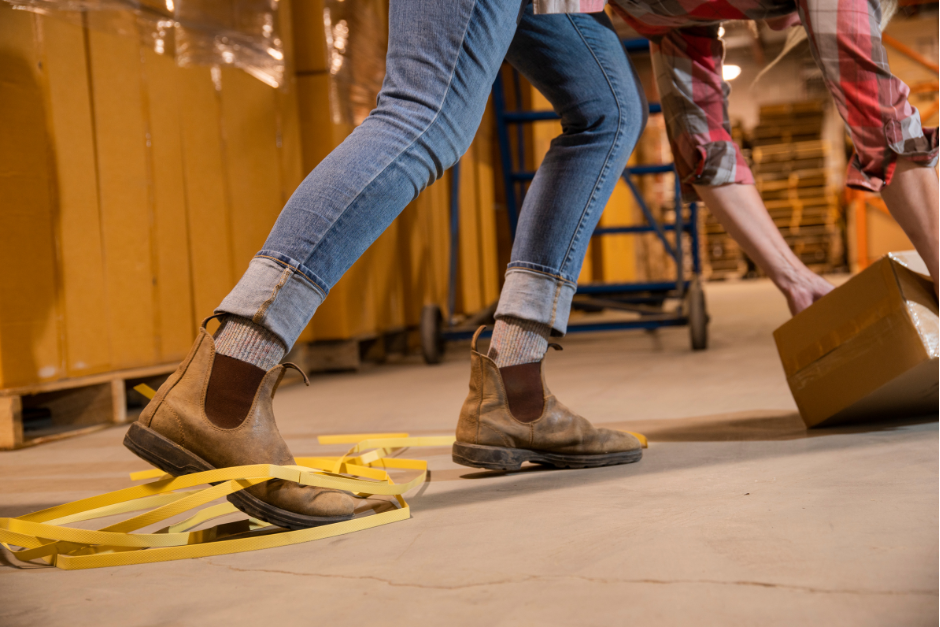It seems like nearly every time I engage with a client on their safety needs, the subject of slips, trips and falls comes up. There’s a good reason for that, as it is the most common cause of accidents and injury.
According to the National Safety Council, in 2020, 42,114 people died in falls at home and at work. For working adults, depending on the industry, falls can be the leading cause of death. In the workplace, 805 people died in falls in 2020, and 211,640 were injured badly enough to require days off.
Fall Hazards
Slips, trips and falls are so common because of the vast variety of potential hazards that can put you at risk whether you are on the ground, on a roof or a ladder.
Here’s a list of The National Institute for Occupational Safety and Health’s (NIOSH) Top 10 Hazards that are responsible for slips, trips, and falls:
- Contaminants on the Floor
- Indoor Walking Surface Irregularities
- Outdoor Walking Surface Irregularities
- Weather Conditions: Ice and Snow
- Inadequate Lighting
- Stairs and Handrails
- Stepstools and Ladders
- Tripping Hazards: Clutter, Loose Cords, etc.
- Improper Use of Floor Mats and Runners
- Poor Drainage: Pipes and Drains
We also have to include HUMAN HAZARDS, like:
- Health and Physical Condition
- Proper carrying of an item
- Inattentive Behavior
- Taking shortcuts
Falls are Preventable
Good housekeeping includes picking up, wiping up, and cleaning up. Aisles and passageways must be kept clear and in good repair and include safe clearances for mechanical equipment and contain no obstructions that could create a hazard. All employees and visitors to the workplace are at risk. Proper training on recognizing the risks and how to utilize prevention techniques will go a long way to keeping people safe.
Here are some basic workplace safety strategies, recommended by NSC:
- Discuss the task with coworkers and determine what safety equipment is needed
- Make sure you are properly trained on how to use the equipment
- Scan the work area for potential hazards before starting the job
- Make sure you have level ground to set up the equipment
- If working outside, check the weather forecast; never work in inclement weather
- Use the correct tool for the job, and use it as intended
- Ensure stepladders have a locking device to hold the front and back open
- Always keep two hands and one foot, or two feet and one hand on the ladder
- Place the ladder on a solid surface and never lean it against an unstable surface
- A straight or extension ladder should be 1 foot away from the surface it rests on for every 4 feet of height and extend at least 3 feet over the top edge
- Securely fasten straight and extension ladders to an upper support
- Wear slip-resistant shoes and don’t stand higher than the third rung from the top
- Don’t lean or reach while on a ladder, and have someone support the bottom
- Never use old or damaged equipment; check thoroughly before use

